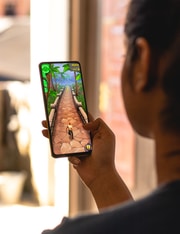We all want our children to be healthy, happy, and successful. But medicine is not always enough for the health of a child. In such a case, different types of therapy come to the rescue. Here we will tell you about pet therapy and how it can benefit your child.
Animal therapy, or pet therapy, is one of the methods in rehabilitation and psychotherapy. Boris Levinson began to develop this field in earnest in 1961: the doctor noticed that the presence of a dog helped establish contact with a child with autism. Animals are known to help not be afraid of children who are facing painful procedures like injections. Even a small aquarium in the lobby of an outpatient clinic or medical center should already dampen the fear a bit.
Pet Therapy
There are two directions in pet therapy. The first is animal-associated therapy, i.e. activities that focus on treatment and assistance: development of motor skills, recovery from serious illnesses, alleviation of the symptoms of mental illness, and making contact in a specific way. The second is called animal-associated activity, which is more general work with animals aimed at evoking positive emotions in patients. The individual areas have their names: hippotherapy (work with horses), dolphin therapy, dog therapy (work with dogs), and feline-assisted therapy (work with cats).
The Americans started using animals in the treatment of illnesses in 1969, and today cats, dogs, dolphins, and horses are active in the treatment of epilepsy, autism, cerebral palsy, and Down syndrome. Animal therapy is conducted by a qualified specialist, who develops a therapeutic plan based on the patient’s history and comorbidities. All animals that participate in pet therapy receive special training.
Therapy Dogs
The main pet therapists are considered dogs, who are known for their sociability, friendliness, patience, and controllability. Dogs are indispensable for the treatment of motor disorders that accompany cerebral palsy. Playing with a dog restores the fine motor skills of the hands and feet, teaches patients to pick up and throw a ball, and to pet the pet. Through play techniques, young patients practice certain skills, often without even realizing that they are in therapy sessions. Dogs in cerebral palsy rehabilitation are also indispensable for increasing motivation, fighting aggression and stress. Large, friendly dogs are subconsciously perceived by patients as protectors. Therefore, children feel calm and confident in their company.
Animals are approached for help in a variety of situations, such as epilepsy, cerebral palsy, and even after a stroke. Pet therapy is used for diseases that are not related to the nervous system, but in which the patient has an increased risk of depression due to long-term treatment, such as cancer, or in palliative care. As Levinson noted more than half a century ago, animals help establish communication with people with different neurodevelopmental disorders – such as autism.
And of course, animals are used to treat mental disorders, from depression to post-traumatic stress disorder. For specific work with patients, the best animals are those that can be trained and trained: horses, dolphins, dogs, and pigs. But furry rodents, birds, lizards, and other animals, even donkeys, also help fight illness.
How Pigs and Cats Can Help
Scientists are still figuring out exactly how pet therapy works and to what extent it is effective. According to some studies, watching animals increases the activity of the prefrontal cortex of the large hemispheres of the brain – this area is involved in decision-making and is responsible for social interaction. Contact with animals releases endorphins in our bodies, like when we play sports, kiss, or make pleasant memories.
Endorphins have an analgesic effect, so pet therapy reduces to some extent the severity of pain syndromes, for example in fibromyalgia. These substances also reduce stress and anxiety, calm and lift one’s mood. Contact with animals, apparently due to the same hormones, normalize high blood pressure and improves the cardiovascular system. But zootherapy also has effects that depend on the specific animal.
For example, hippotherapy – treatment with horseback riding – is recommended for children with neurological disorders such as cerebral palsy. It takes physical strength, a sense of balance, and coordination to stay on a horse, and riding lessons help develop all of these skills. In addition, the horse is an animal with character, and you have to communicate with it, even while riding, which helps develop social skills. The nice thing is that one’s self-esteem goes up as well. Altogether, this turns hippotherapy into a tool of socialization.
Emotional Support
Dolphin therapy has about the same effect on children. Movement in water and contact with an intelligent animal develop physically and emotionally, help a person move, perform non-standard actions. And feline therapy, that is companionship with cats, is usually recommended to relieve stress: the vibrations of purring and watching the soft movements of cats helps to relax. When selecting animals, their character is also taken into account. People with mobility disorders should choose quiet, phlegmatic animals as companions. Patients who need to be motivated or helped to cope with depression or fear will find active animals.
Pet therapy provides emotional support and can alleviate various mental health issues. Qualified dogs that aid in pet therapy are notably crucial for aiding individuals dealing with stress, depression, and post-traumatic stress disorder (PTSD). Some of these animals serve as certified psychiatric service dogs, offering targeted therapeutic aid and improving life quality significantly. Obtaining a mental health service animal certification ensures these dogs are equipped to provide the necessary support tailored to their owner’s specific needs.
Is it Possible to Buy a Dog and Get Well?
All of this sounds tempting and begs the question: can’t we replace medication altogether with companionship with animals? It would be great to get a hamster and get rid of bipolar disorder, and to pet a cat and say goodbye to childhood traumas. But the animal itself is not a pill or a certified specialist. The animal doesn’t know how or who to treat (contrary to popular myths about the special sensitivity of cats). Therefore, it is necessary to work with pets, if a therapeutic effect is required, together with a specialist. Pet therapy is usually not used by itself but as part of a complex treatment.
Cats and dogs are perhaps the most common type of pets and provide emotional well being for those who are not even seeking pet therapy. The value of this relationship is so important that pet owners will even consider pet insurance in the event their pet becomes ill. Medical bills can be quite expensive.
Of course, to a certain extent, an animal can improve health and quality of life by its mere presence – this is called “undirected pet therapy”. For example, the fact that you got your child a dog imposes a number of obligations. The dog has to be walked, i.e. to take a leash and walk in the streets. It is a physical and useful activity, so that dog owners, especially those who like to walk, have a better chance of staying healthy, even if they do not exercise. In addition, dogs sometimes serve as a confidant, if not a therapist: things that patients don’t dare tell another person, they can tell the dog.
Why Horses and Dolphins are Not Indicated for Everyone
Of course, we must understand that zootherapy is a method that requires serious research and evidence. Unfortunately, sometimes therapy with the help of animals is advertised unfairly, especially when it comes to the rehabilitation of children. For example, they promise unprecedented progress from lessons with dolphins, while there is no serious evidence that it is dolphins that improve the condition of patients.
If pet therapy is still considered as an auxiliary method of treatment, the animal must be chosen with a specialist. It all depends on the goals of treatment, the patient’s condition, and his peculiarities. Even if the child needs a faithful friend and outdoor walks, but is simply afraid of dogs, you should not drag him or her into contact with them. A patient with a spinal cord injury should not ride a horse, even if he wants to try hippotherapy, with a lack of warmth and close relationships is unlikely to seriously help a turtle.
There are also more prosaic contraindications. For example, an allergy to fur and skin, in which case you should not get a cat. In addition, not every animal can be therapeutic. Animals can be aggressive and fearful, and in this case, communicating with them will not be beneficial, especially for a person with a mental disorder or neurological disorder. But limitations can be circumvented – choose an animal that is not frightening and is not allergic to, exercise in places where animals are prepared to meet patients – and then exercise will do more good than harm.
Looking for a different kind of pet that is still safe for children and families? Check out these child friendly reptiles.



 Helen has nearly 20 years’ experience working with children and young people. As a primary school teacher and child and adolescent counselor she is passionate about understanding and supporting children. Helen is head of counseling at
Helen has nearly 20 years’ experience working with children and young people. As a primary school teacher and child and adolescent counselor she is passionate about understanding and supporting children. Helen is head of counseling at 



